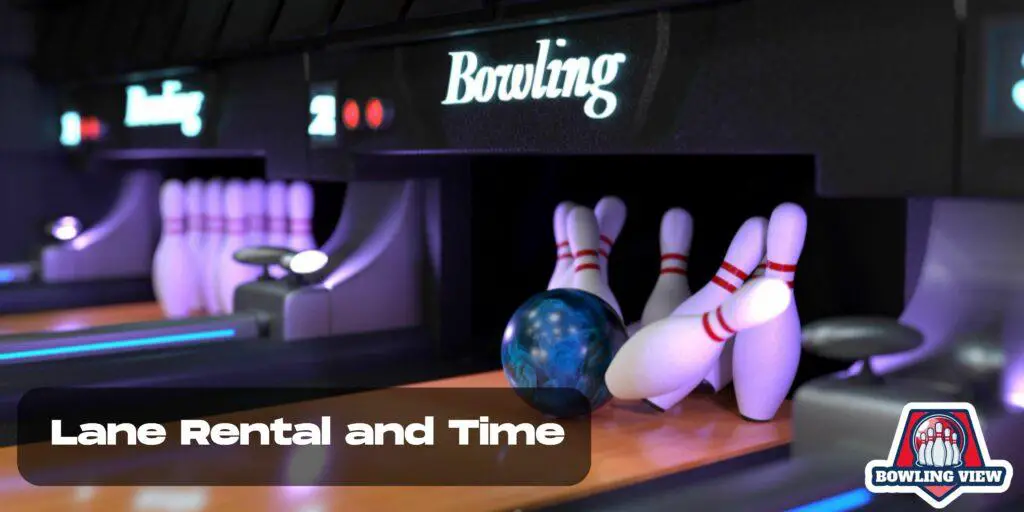Bowling, a popular pastime for many, can often come with a rather hefty price tag. As people head to their local bowling alley to catch up with friends, bond with family, or simply hone their skills, they might find themselves wondering why bowling is so expensive and the seemingly simple activity can carry such a significant cost.
There are multiple factors at play that contribute to the expenses associated with bowling.
One of the main reasons for the higher cost comes down to the maintenance and operation of the facilities. Bowling alleys are large establishments that require significant amounts of electricity for lighting and to power the machinery that runs the lanes.
A substantial portion of the expenses incurred by bowling alley owners covers the cost of maintaining and upgrading the equipment, including pinsetters, ball returns, and the lanes themselves.
Additionally, bowling alleys are often faced with insurance costs that are higher than those for many other types of businesses. This is due in part to the risks associated with operating heavy machinery and the potential for injuries on the premises.
These expenses factor into the overall cost of providing a bowling experience to customers, ultimately resulting in why many bowling alleys charge higher prices for each game or lane rental.
Factors Contributing to Bowling Costs
Lane Rental and Time
One of the primary factors that contribute to the expensive nature of bowling is lane rental and time. Bowling centers typically charge per hour or per game, which can add up quickly, especially during peak hours or for large groups.
Additionally, these prices cover the expenses of maintaining the quality and materials of the lanes, as well as ensuring they are waxed and oiled for optimal performance for players.
Rental Equipment: Shoes and Balls
Another aspect that affects the cost of bowling are the rental fees for equipment like bowling shoes and bowling balls. These items are essential for playing the sport, and bowling centers invest in high-quality shoes and balls to provide the best experience for their customers. Rental fees for these items often add to the per-person or per-hour price and help cover the costs of maintaining, replacing, and updating the rental equipment.
Overhead Costs and Upkeep
Bowling centers have high overhead costs due to the expenses of running and maintaining the facility. This includes utilities, staffing, and regular maintenance of the lanes, pinsetters, and the bowling ball returns. Upkeep is crucial to ensure that the establishment remains safe and appealing for customers, making it a necessary investment for the business. These overhead costs contribute to the overall per-person, per-hour, or per-game fees charged to customers.
Location and Operating Expenses
Location plays a significant role in the operating expenses and overall costs of running a bowling center. Facilities in prime locations with higher rent or property taxes may charge more for their services, ultimately resulting in higher costs for customers. Moreover, local regulations and standards may impact expenses beyond bowling cost, such as labor costs and insurance premiums.
Food and Beverages
Lastly, the cost of bowling may include the purchase of food and beverages, whether a requirement or chosen by the group. Bowling centers often sell food and drinks as a way to supplement their revenue and make the experience more enjoyable for patrons. While the prices of these items can vary, they can significantly increase the overall cost of an outing to a bowling center.
In summary, several factors contribute to the costs of bowling, including lane rental and time, rental equipment rental, overhead costs and upkeep, location and operating expenses, and food and beverages. These components work together to provide a quality experience for customers while also ensuring the profitability and sustainability of the bowling center.
Money-Saving Strategies for Bowling
Bowling is a fun pastime for people of all ages, but the costs can add up quickly. In this section, we discuss some money-saving strategies that can make this enjoyable hobby more a fun and affordable way for families and individuals.
Choosing Off-Peak Hours and Special Discounts
One way to save money is by visiting the bowling alley during off-peak hours. These hours typically have lower pricing, so it’s cheaper to bowl. While these times may vary from one location to another, off-peak hours generally include weekdays during daytime or late night hours. Some bowling alleys also offer special discount days or promotions during the week.
Keep an eye out for special events or tournaments at the bowling alley, as they may offer discounted rates or package deals. This is a great way to get more practice and improve your game while also saving money.
Joining a Bowling League or Membership
Joining a bowling league can be a cost-effective strategy. League fees often include the cost of games and shoe rental, making it cheaper than paying for each game individually. Additionally, bowling leagues provide a consistent schedule for practice, allowing you to budget your expenses and make the most out of your investment.
Some bowling alleys offer memberships that provide discounts on games, shoe rentals, and other amenities. These memberships can be worthwhile if you plan to bowl frequently, and they may even include additional benefits such as access to other bowling alleys offer discounts on special events, tournaments, or discounts on food and beverages.
Investing in Your Own Equipment
While many bowling alleys usually provide house balls and shoes for rental, the quality and consistency of these items may not be the best. Investing in your own bowling equipment, such as a ball and shoes, can improve your game by providing a more consistent experience.
Another interesting read> How to Take Care of Bowling Equipment.
Balls made of polyester or plastic are typically more affordable and are suitable for beginners. As you progress and develop your skills, you may choose to upgrade to a higher-quality ball for better performance.
While the initial investment in your very own bowling shoes, ball and equipment may seem expensive, it can save you money in the long run by eliminating the need to rent house balls and shoes. This also allows for greater consistency in your practice, ultimately leading to a more enjoyable and successful bowling experience.
Comparing Bowling to Other Sports and Entertainment
The Cost of Bowling vs. Golf and Other Pastimes
Bowling is an expensive sport but often considered to be a more affordable sport when compared to golf and other pastimes. The cost of playing golf, for example, often requires memberships, greens fees, and equipment purchases that can add up quickly. Furthermore, the cost of designing and maintaining a golf course can be quite substantial.
On the other hand, bowling is popular among families and individuals of all ages because it is seen as fun and relatively inexpensive. The pricing for bowling usually involves a per-game fee and optional shoe rental fee. The average cost per game at most bowling alleys ranges from $2 to $6, with premium bowling lanes and upscale alleys sometimes charging higher prices. The design of premium bowling alleys typically includes a variety of entertainment options like arcade games, billiards, and even bars, making the location enjoyable for extended periods.
However, it is worth noting that some bowlers may find high prices when purchasing additional equipment, such as shoes, bowling balls, bags, and bowling gloves. Bowling alleys also utilize advanced scoring systems that do require ongoing maintenance, which can contribute to the costs associated with operating a bowling center.
In terms of strategy, both sports require skill and practice to improve one’s game. While golf requires maintaining a low score, bowling challenges players to achieve the highest possible score by knocking down as many pins as possible. Scoring systems in both sports can be complex to the beginner, but with time and experience in bowling game itself, they can be easily understood.
In comparison to bowling games and other pastimes like movies, amusement parks, and hobbies, bowling offers an attractive blend of entertainment, social engagement, and healthy competition. The sport accommodates various skill levels, making it accessible to a wider demographic.
So while bowling may have some expenses related to additional equipment, these costs are generally much lower than other sports and pastimes, specifically when compared to golf. By offering an all-ages, family-oriented experience, bowling has positioned itself as an accessible and affordable form of entertainment.
Related Articles:



